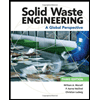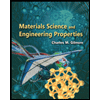An activated sludge process with an aeration basin of 4,000 m³ is treating a wastewater flow of 7,500 m³/day. The influent BOD5 is 250 mg/L and the activated sludge is designed to remove 90% of BOD5. (**Biomass wasting directly from the aeration basin) Pertinent data: Biomass concentration in aeration basin = 2000 mg/L Biomass concentration in the effluent = 20 mg/L Waste flow rate = 250 m³/day (biomas wasted directly from the aeration basin) kd = 0.01 d-¹ (a) Calculate the MCRT of the process. (b) Determine the yield coefficient, Y. (c) If the recycle ratio is 0.5 (i.e., QR = 50% of Q), calculate biomass concentration in recycled activated sludge, XR. (Assume: influent biomass, X = 0) Influent Biomass Wasting Biomass recirculation Effluent
An activated sludge process with an aeration basin of 4,000 m³ is treating a wastewater flow of 7,500 m³/day. The influent BOD5 is 250 mg/L and the activated sludge is designed to remove 90% of BOD5. (**Biomass wasting directly from the aeration basin) Pertinent data: Biomass concentration in aeration basin = 2000 mg/L Biomass concentration in the effluent = 20 mg/L Waste flow rate = 250 m³/day (biomas wasted directly from the aeration basin) kd = 0.01 d-¹ (a) Calculate the MCRT of the process. (b) Determine the yield coefficient, Y. (c) If the recycle ratio is 0.5 (i.e., QR = 50% of Q), calculate biomass concentration in recycled activated sludge, XR. (Assume: influent biomass, X = 0) Influent Biomass Wasting Biomass recirculation Effluent
Solid Waste Engineering
3rd Edition
ISBN:9781305635203
Author:Worrell, William A.
Publisher:Worrell, William A.
Chapter2: Municipal Solid Waste Characteristics And Quantities
Section: Chapter Questions
Problem 2.15P
Related questions
Question
100%

Transcribed Image Text:An activated sludge process with an aeration basin of 4,000 m³ is treating a wastewater flow of 7,500
m³/day. The influent BOD5 is 250 mg/L and the activated sludge is designed to remove 90% of BOD5.
(**Biomass wasting directly from the aeration basin)
Pertinent data: Biomass concentration in aeration basin = 2000 mg/L
Biomass concentration in the effluent = 20 mg/L
Waste flow rate = 250 m³/day (biomas wasted directly from the aeration basin)
kd = 0.01 d-¹
(a) Calculate the MCRT of the process.
(b) Determine the yield coefficient, Y.
(c) If the recycle ratio is 0.5 (i.e., QR = 50% of Q), calculate biomass concentration in recycled activated
sludge, XR. (Assume: influent biomass, X = 0)

Transcribed Image Text:Influent
Biomass
Wasting
Biomass recirculation
Effluent
Expert Solution
This question has been solved!
Explore an expertly crafted, step-by-step solution for a thorough understanding of key concepts.
Step by step
Solved in 2 steps

Recommended textbooks for you

Solid Waste Engineering
Civil Engineering
ISBN:
9781305635203
Author:
Worrell, William A.
Publisher:
Cengage Learning,


Materials Science And Engineering Properties
Civil Engineering
ISBN:
9781111988609
Author:
Charles Gilmore
Publisher:
Cengage Learning

Solid Waste Engineering
Civil Engineering
ISBN:
9781305635203
Author:
Worrell, William A.
Publisher:
Cengage Learning,


Materials Science And Engineering Properties
Civil Engineering
ISBN:
9781111988609
Author:
Charles Gilmore
Publisher:
Cengage Learning

Traffic and Highway Engineering
Civil Engineering
ISBN:
9781305156241
Author:
Garber, Nicholas J.
Publisher:
Cengage Learning